Welcome to the wild world of cannabinoids! If you’ve been cruising through the cannabis cosmos, you might have heard of the rock stars like THC and CBD. But today, we’re giving the spotlight to a lesser-known yet equally relevant cannabinoid: CBGa, also known as Cannabigerolic Acid.
Think of cannabinoids as the tiny alchemists of the cannabis plant, each playing a vital role in crafting the plant’s unique properties. They’re the reason cannabis has therapeutic and recreational effects that have piqued human interest for centuries.
Now, let’s talk about CBGa, often dubbed the “mother of all cannabinoids.” Why, you ask? Because it’s the parent molecule from which other cannabinoids are born. Without CBGa, our beloved THC, CBD, and many other compounds simply wouldn’t exist.
In this blog, we’ll dive into what makes CBGa tick, its pivotal role in the lifecycle of cannabis, and why it’s beginning to garner attention in the industry. Let’s begin!
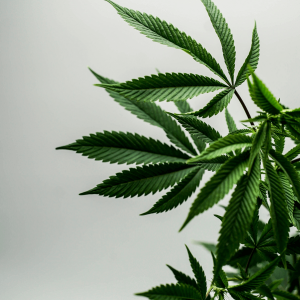
What is CBGa?
Cannabigerolic Acid, or CBGa, might sound like something cooked up in a mad scientist’s lab, but it’s actually a naturally occurring compound in its acidic form found in the cannabis plant.
CBGa (the precursor to CBG) is the starting block in the plant’s journey to produce all those famous cannabinoids like THC, CBD, and many others. Chemically speaking, CBGa appears distinguished by a carboxylic acid group, making it a versatile biosynthetic precursor. It forms through the combination of olivetolic acid and geranyl pyrophosphate, two building blocks that set the stage for cannabinoid magic.
Without CBGa, the world of cannabis would be missing its well-known superheroes, as this compound is the gateway to all cannabinoid pathways, making it an indispensable player in the plant’s natural chemistry.
The Science Behind CBGa (Cannabigerolic Acid)
Turning science into fun requires a little zest and the conversion of CBGa is nothing short of fascinating. In the alchemy lab of the cannabis plant, CBGa plays the identity thief, morphing into other key cannabinoids through a process known as biosynthesis.
It all starts in the trichomes, those frosty little crystals on the cannabis flowers, where CBGa meets a gang of enzymatic wizards known as CBDa synthase, THCa synthase, and CBCa synthase. These enzymes transform CBGa into the compounds we know and love – THC, CBD, and CBC, to name a few. Without these timely enzymatic reactions, the trifecta of cannabis compounds wouldn’t shine.
The entire transformation feels like a botanical version of musical chairs, where CBGa generously steps aside to let its progeny take the spotlight. This critical conversion not only illustrates the ingenuity of nature but also sets the foundation for cannabis diversity and functionality.
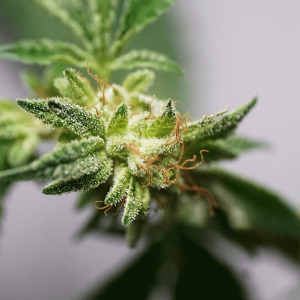
Historical Background
The history of CBGa (cannabigerolic acid) begins in the days when research specifically on cannabis was as mysterious as the secrets of alchemy. Back in the 1960s and ’70s, scientists first stumbled upon this curious compound during their quest to unravel the mystery of cannabis chemistry.
Although THC and CBD were fast gaining fame, CBGa-rich strains were occasionally employed by those in the know for their unique properties, tucked away like a secret of the ages. Over time, as cannabis culture and science evolved, so did our understanding of CBGa.
From being a forgotten footnote in cannabis history, it’s now lauded as the mother of all cannabinoids, with researchers keenly exploring its potential therapeutic benefits. This shift highlights the growing appreciation for the complexity and brilliance of CBGa, solidifying its place in the colorful tapestry of cannabis tradition.
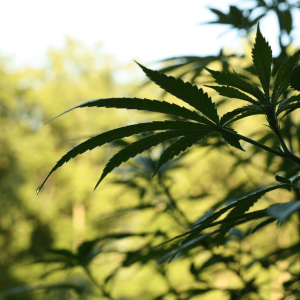
Growing and Cultivating CBGa-rich Strains
If you’re dreaming of cultivating cannabis plants rich in the CBGa molecule (cannabigerolic acid), then you’re in the right guidance galaxy. Harvesting this unsung hero of cannabinoids requires a touch of green thumb magic, a sprinkle of patience, and a dash of botanical know-how.
Top Strains Known for High CBGa Content
- Super Glue CBG: Known for its sticky name, it boasts a generous CBGa yield and a powerful, soothing aroma.
- White CBG: Famous for its frosty appeal, this strain brings high CBGa levels bundled with a mild and relaxing experience.
- Jack Frost CBG: Bringing the chill without the thrills, this strain provides a high CBGa profile coupled with a robust, piney fragrance.
Tips and Tricks for Cultivators
To cultivate CBGa-rich strains, start with high-quality seeds from reputable sources focusing specifically on CBGa content. Keep conditions optimal – think slightly lower temperatures to avoid the full conversion of CBGa into other cannabinoids.
Pay close attention during the harvest window; timing is key to maximize CBGa levels. Regular soil testing, careful management of light exposure, and maintaining balanced nutrients ensure a healthier plant and higher cannabinoid yield.
Influence of Cultivation Methods on CBGa Levels
Simply stated, how you grow your cannabis can make or break your CBGa dreams. Organic cultivation methods where plants are allowed to flourish naturally often result in elevated CBGa levels due to reduced chemical interference.
Conversely, indoor cultivation with controlled climate conditions can also boost CBGa levels by allowing cultivators to tweak plant stress factors like light cycles and humidity to optimize biosynthesis.
In essence, the art and science of cultivation not only determine the final CBGa content but shape the overall quality and character of the strain.
CBGa vs. CBD and THC
Comparing CBGa with CBD and THC is like lining up the family for a photo and trying to spot the resemblance. At first glance, all these cannabinoids share a common ancestry, yet each carries unique traits that make them stand out.
Chemically, CBGa acts as a precursor, housing a carboxylic acid group that gently nudges it to abandon its identity for more mature forms like CBD and THC. While CBD is celebrated for its non-intoxicating therapeutic uses, and THC for its psychoactive properties, CBGa sits quietly as the unsung hero, gifted with its unique properties that are just starting to unfold.
In terms of effects, CBGa isn’t thought to exhibit the direct results seen with THC’s euphoric highs or CBD’s calming vibes. Instead, its claim to fame includes supporting cellular health and possibly influencing metabolic pathways crucial for maintaining the body’s balance.
What’s intriguing is CBGa’s potential to harmonize its functions with other cannabinoids – think of it as the middle child that pulls the family closer. This synergistic relationship is under the microscope, as CBGa may enhance or modulate the effects of its cannabinoid siblings, potentially leading to more refined therapeutic outcomes.
As the cannabis world continues to explore these nuances, CBGa’s unique and complementary roles are bound to elevate its status within the dynamic cannabinoid family.
CBGa in Products
As cannabis keeps charming its way into mainstream markets, CBGa is strutting its stuff in a variety of products. Types of CBGa products available include:
- Oils: CBGa oils are gently crafted to retain their colorful chemical bouquet, providing a versatile addition to countless routines.
- Tinctures: With their subtle yet potent kick, CBGa tinctures are a go-to for those seeking targeted relief wrapped in a few convenient drops.
- Topicals: Embracing a more hands-on approach, CBGa topicals offer potential skin-deep benefits.
When comparing with other cannabinoid products, CBGa stands out for its emerging therapeutic promise and its boutique exclusivity, often fetching a premium price. While CBD and THC continue to hog the spotlight, market trends and consumer interest are slowly turning towards CBGa, drawn by its unique profile and the quest to unlock its full potential.
Potential Health Benefits
An overview of studies on health effects suggests that CBGa might just have an encore-worthy performance hidden up its sleeve.
- Anti-inflammatory and antibacterial properties: Early birds in the research scene suggest that CBGa could work wonders as an anti-inflammatory ally, possibly reducing inflammation with the flair of a seasoned peacemaker. Furthermore, with its potential antibacterial effects, CBGa might arm you with an extra layer of microbial defense.
- Neuroprotective and cancer-fighting potential: Hold onto your hats, because CBGa could be a neuroprotective superhero, possibly shielding our precious neural pathways from degeneration. Preliminary studies also nod towards CBGa’s cancer-fighting potential, where it could hinder the growth of certain cancer cells—a daring feat that researchers are eagerly examining.
While minimal research is available and much more research is needed to fully unravel its capabilities on various metabolic disorders, CBGa’s possible health benefits pose intriguing questions and hopeful promises for future explorations.
As each discovery unfurls like pages in a grand adventure, CBGa holds the potential to significantly influence the wellness world, one experiment at a time.
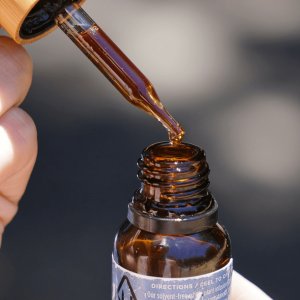
CBGa Extraction Methods
Extracting CBGa from cannabis plants is an art that combines science with nature’s bounty. There are several common extraction techniques employed to capture this elusive cannabinoid:
- CO2 Extraction: Known as the gold standard, CO2 extraction is celebrated for producing a highly pure, potent product. However, it comes with a hefty price tag due to the sophisticated equipment required and can be energy-intensive.
- Ethanol Extraction: This method is more cost-effective and efficient while retaining much of the plant’s valuable compounds. Ethanol extraction is, however, less precise than CO2, which can affect the purity and potency of the final product.
- Hydrocarbon Extraction: This approach typically uses butane or propane to extract CBGa. It’s efficient for extracting cannabinoids but comes with concerns over residual solvents and safety, potentially impacting purity.
- Cold Press Extraction: With a focus on maintaining the raw benefits of the plant, this gentle method keeps the cannabinoid profile intact but yields a less concentrated oil, requiring more product for the desired effects.
Each technique artfully balances the scales of purity and potency, making the choice of extraction method not just a technical decision, but a strategic one that influences the end product’s quality and cannabinoid richness.
Legal Status and Regulations
Currently, CBGa products navigate through a web of regulations that vary widely from one region or country to another.
In the United States, CBGa falls under the umbrella of hemp-derived compounds, which are federally legal thanks to the 2018 Farm Bill, as long as the THC content remains below 0.3%. However, individual state regulations can differ, creating a patchwork of legal stipulations.
Across the pond, the European Union also applies its own set of rules, often more stringent, primarily focusing on health claims associated with cannabinoid products. Navigating these regulations requires a keen understanding of both local and international legal frameworks, as well as an eye on the horizon for new developments.
As research continues to shine a light on CBGa’s potential, future legal considerations may ease restrictions as governments adapt policies to encourage scientific exploration and consumer safety.
Research and Innovations
Recent studies have brought to light the promising effects of CBGa on various health conditions, serving as a springboard for future exploration. Scientists are diligently uncovering CBGa’s potential in areas like neuroprotection, cancer inhibition, and inflammation reduction, each discovery serving up glimpses of what this cannabinoid might achieve.
In the industry, innovations abound as companies strive to perfect extraction techniques, improve potency and purity, and create novel applications for CBGa. This has led to the thrilling development of new products, from sophisticated topicals to high-efficacy tinctures.
As science chisels away at our understanding, future research directions point toward more targeted studies that hone in on specific interactions between CBGa and the human body. This includes understanding its role in the entourage effect when combined with other cannabinoids and potential therapeutic effects across a wider range of health conditions.
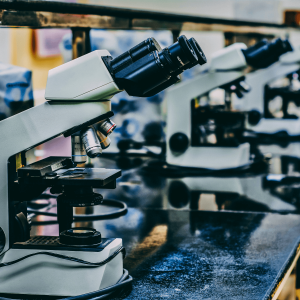
Challenges and Misconceptions
As CBGa struts into the spotlight, it brings along a suitcase filled with challenges and misconceptions. A common myth floating around is that CBGa packs the same psychoactive punch as its more famous cousins, THC and CBD. Spoiler alert: it doesn’t.
And while some consumers may envision a world where CBGa is akin to snake oil, promising miraculous cures for any ailment, the reality is far from it. Scientifically, the challenge lies in the nascent stage of CBGa research, where consumers await further studies for a clearer picture.
Regulatory hurdles add another layer of complexity, as the patchwork of laws keeps consumers guessing which products are safe and legal. Misunderstandings among consumers often revolve around the potency and affordability of CBGa, leaving some puzzled by the premium prices and availability.
The Future of CBGa
Looking into CBGa’s crystal ball, the future gleams with potential and innovation. Industry predictions paint a picture where CBGa’s role expands across sectors, from wellness to pharmaceutical and research uses.
In the beauty industry, imagine a surge in luxurious skincare formulations enriched with CBGa’s promising benefits, potentially ushering in a new era of anti-aging products. Pharmaceuticals might harness its properties for groundbreaking treatments that are both effective and natural.
As research deepens, CBGa could find applications in agriculture, enhancing plant resistance with its biochemical prowess. The journey to this future demands navigating scientific, legal, and environmental challenges. Yet, with a focus on sustainable cultivation practices and innovative extraction methods, CBGa can stride confidently toward long-term viability.
As CBGa continues to carve its niche, the horizon seems promising, with opportunities waiting to spring from every new finding and development.
Conclusion
As we wrap up our deep dive into CBGa, it’s clear that this cannabinoid is not just a fleeting trend but a formidable player in the wellness and scientific communities. CBGa’s unique properties and potential health benefits make it a captivating subject for ongoing research and exploration.
From its role in neuroprotection to its promising anti-inflammatory effects, CBGa stands out as a potential game-changer in many therapeutic areas. While we’ve only scratched the surface of what’s possible, further scientific study could unveil more of its hidden capabilities, transforming how we view plant-derived treatments. Encouraging more research will deepen our understanding and broaden the landscape of available data, ultimately opening doors to innovative applications.
For consumers and industry professionals alike, embracing CBGa means staying ahead of the curve in this rapidly evolving field. By investing in and supporting continued research, we can contribute to the foundational knowledge that will drive future discoveries.
In the grand tapestry of cannabinoids, CBGa might just be the intricate thread we’ve been looking for—a powerhouse ready to revolutionize wellness and health, one study at a time.
Frequently Asked Questions
1. What is CBGa good for?
CBGa is turning heads in the wellness world for its potential therapeutic effects. Preliminary studies suggest it could be beneficial for neuroprotection, aiding in reducing inflammation, and possibly playing a role in cancer inhibition. While more research is definitely on the menu, early findings have many jumping on the CBGa bandwagon, eagerly anticipating future discoveries.
2. Will CBGa get me high?
Good news for those worried about a surprise trip to la-la land—CBGa won’t get you high. Unlike THC, its more famous (and psychoactive) relative, CBGa takes the mellow road, offering potential health benefits without the psychoactive effects. So, you can explore CBGa’s offerings without fearing an unexpected ride on the magic carpet.
3. How does CBGa make you feel?
Users often report feeling clear-headed and calm when using CBGa products, all thanks to its non-psychoactive nature. While it’s no magic potion for euphoria, CBGa may contribute to an overall sense of wellness and balance. The experience can be quite personal, varying from one individual to another, so it’s best to try it out and see how it resonates with your vibe.
4. What is the difference between CBG and CBGa?
In the cannabinoid family reunion, CBG and CBGa are closely related, with CBGa being the chemical precursor to CBG. Think of CBGa as the raw ingredient that eventually converts into CBG and other cannabinoids during the plant’s growth and maturation process. In essence, CBGa is a “mother cannabinoid,” leading to the production of CBG, THC, and CBD as the plant matures, making it an exciting focal point for both research and product development.
5. What is CBCa?
CBCa, or cannabichromenic acid, is among the many acidic cannabinoids. Much like both CBGa and THCa, CBCa is a precursor, which means it transforms into CBC through a process called decarboxylation when exposed to heat and light. Early research hints at potential anti-inflammatory and pain-relieving properties, but the scientific world is still in the early stages of unveiling its full spectrum of benefits. As researchers continue to explore its capabilities, CBCa could eventually become a noteworthy solo act in therapeutic treatments.

 Rewards
Rewards




